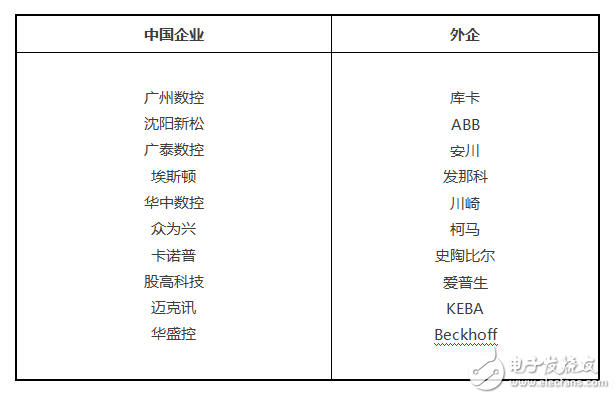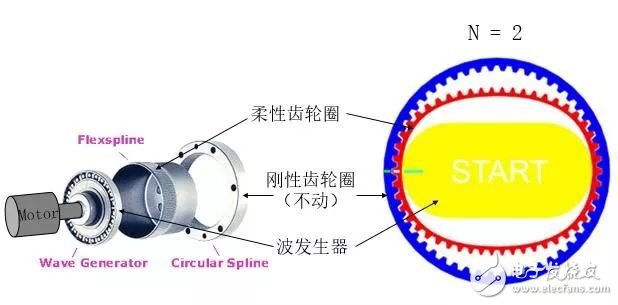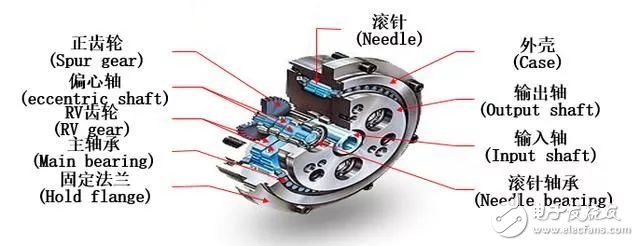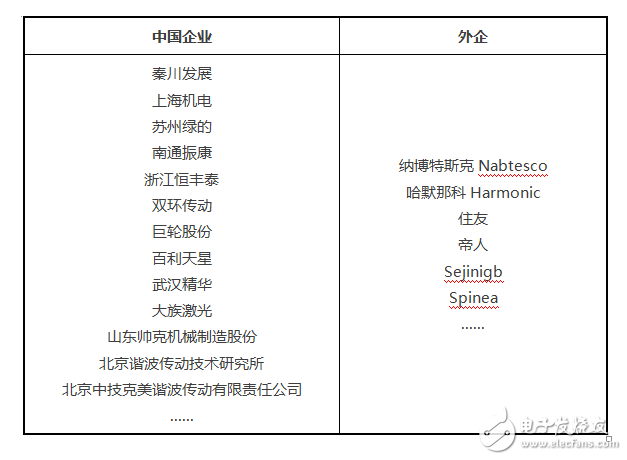The development and application of industrial robots is the top priority of China's manufacturing industry towards high-end and intelligent. At present, China's industrial robot industry presents the dual important characteristics of “rapid growth†and “domestic substitutionâ€. Industrial robots are multi-joint robots or multi-degree-of-freedom machines for industrial applications. They can perform work automatically. They are machines that realize various functions by their own power and control. It can be commanded by humans or run in accordance with pre-programmed procedures, and modern industrial robots can also act on the principles of artificial intelligence. Composition Industrial robots consist of three basic parts: the main body, the drive system and the control system. Industrial chain of industrial robots The upstream of the industrial robot industry is the core component, mainly the reducer and control system, which is equivalent to the "brain" of the robot. The midstream is the robot body, which is the "body" of the robot. The downstream is the system integrator, and the domestic enterprises are concentrated in This link. The electric servo drive system is an indispensable key component of industrial robots. It is the actuator that directly or indirectly drives the robot body by using the torque and force generated by various motors to obtain various movements of the robot, usually by servo motor. And the composition of the servo drive. In addition to speed and torque control, the servo system provides precise, fast and stable position control. 1. Requirements for servo motors for industrial robots 1) Fast response, the higher the sensitivity of the electric servo system, the better the fast response performance; 2. The core technology of servo motor 1) Reliability of the signal connector. Domestic servos need to be improved, and the miniaturization and high density of connectors are also a trend. The integration design with the servo motor body is a good practice. At present, many Japanese servo motors are designed in such a way as to facilitate installation, debugging and replacement. 3. Some enterprises of robot servo motor The industrial robot controller is the core brain of the robot control system. The main task of the controller is to solve the forward kinematics and inverse kinematics of the robot to realize the mutual conversion of the operating space coordinates and joint space coordinates of the robot, complete the trajectory planning task of the robot, and realize high-speed servo interpolation operation and servo motion. control. The robot controller consists of robot controller hardware and robot controller software. The software part of the robot controller is the "heart" of industrial robots. With the development of technology, industrial robots have different levels of research results from the lower computer to the upper computer application software. The more the number of robot axes, the higher the performance requirements of the controller: the degree of freedom of the robot depends on the number of joints that can be moved. The more the number of joints, the higher the degree of freedom and the higher the accuracy of the displacement. The number of servo motors is relatively large, that is, the more precise the number of servo motors used in industrial robots. Generally, each multi-axis robot is controlled by a control system, which means that the controller has higher performance requirements. The development of control systems involves more core technologies, including hardware design, underlying software technology, and upper-level functional application software. With the accumulation of technology and application experience, domestic enterprise robot controller products are relatively mature, and are robot products and foreign countries. The key components with the smallest product gap, the hardware platform used by the domestic robot controller is not much different from the foreign products. The gap is mainly in the control algorithm and the ease of use of the secondary development platform. Some enterprises of industrial robot controllers The industrial robot core component reducer is the core of mechanical transmission. The speed and accuracy of the robot are related to the reducer. The reducer used in industrial robots mainly includes: harmonic reducer and RV reducer. 1, harmonic gear reducer The harmonic gear reducer is a new type of reducer developed by the principle of planetary gear transmission. It consists of a wave generator, a soft wheel and a rigid wheel. The wave generator is used to make the flexible wheel produce controllable elastic deformation, and rely on the flexible wheel and The wheels are engaged to transmit motion and power. Harmonic transmission has the advantages of high motion precision, large transmission ratio, small mass, small volume and small transmission inertia. The most important thing is to be able to transmit motion in confined spaces, something that no other mechanical drive can achieve. The disadvantage is that in the harmonic gear transmission, the elliptical deformation occurs twice per revolution of the flexible wheel, which is easy to cause fatigue damage of the material and has large power loss. At the same time, the torsional deformation angle caused by it reaches 20' to 30' or even larger. Affected by the bearing clearance and the like may cause a return error of 3 7 to 6 ', and does not have a self-locking function. Harmonic gear reducer 2, RV reducer The RV reducer consists of a front stage of a planetary gear reducer and a rear stage of a cycloid reducer. RV transmission is a new type of transmission. It is developed on the basis of the traditional oscillating planetary transmission. It not only overcomes the shortcomings of the general sway transmission, but also has small size, light weight, large transmission ratio range and long service life. A series of advantages such as stable accuracy, high efficiency and smooth transmission. The RV reducer has superior performance: the transmission part of the cycloidal pinion planetary reduction gear has high rigidity and small contact stress, and the machining and installation accuracy of the parts is easy to achieve high precision, which makes the cycloidal pinwheel transmission highly efficient. 2 planetary transmission structure combined with compact w output mechanism, the entire cycloidal pinwheel reduction device is very compact, so its structure is small and light weight; 3 uses a tooth difference or less tooth difference transmission, cycloidal pinion transmission The transmission ratio depends on the number of teeth of the cycloidal pinwheel. The more the number of teeth, the larger the transmission ratio. 4 The number of teeth of the cycloidal pinion drive meshing at the same time is larger than that of the involute external tooth drive. Therefore, the bearing capacity is higher. Large; 5 Cycloidal and pinwheel teeth are hardened and finely ground. Compared with the involute, the internal gear of the gear is better, the tooth surface hardness is higher, and the service life is longer. RV reducer Some companies of industrial robot reducers The ontology vendor in the middle of the industry chain The work of the robot body manufacturer is mainly to produce the robot body, which is responsible for the production of key components of the robot, control algorithms, and development environment design. The main international player of industrial robots The gap between China's industrial robots and Europe, America and Japan is still obvious. At present, the “Four Big Family†of industrial robots (ABB, KUKA, FANUC, Yaskawa) is the world's leading supplier of industrial robots, accounting for about 50% of the global market share. It accounts for 60% of the Chinese market, while domestic independent brands account for less than 10%. Other world-renowned industrial robot companies include Kawasaki Kawasaki Heavy Industries, Epson Epson Robotics, Staubli Stäubli Robots, NachiFujikoshi Nachi Robots, Comau Comma Robotics, Adept Adelphi Robotics, and China's New Pine Robotics. Since 2013, China has become the world's largest industrial robot market for four consecutive years. According to the International Federation of Robotics IFR, in 2016, China's industrial robots sold 90,000 units, a year-on-year increase of 31%, accounting for about one-third of global sales. . At present, Chinese robot manufacturers are expanding their share in the domestic market. From 2018 to 2020, the annual sales of Chinese robots are expected to increase by an average of 15% to 20% per year. According to statistics, from January to September 2017, the output of industrial robots in China reached 95,351 units (sets), an increase of 69.4% over the same period of last year. The output in September was 13,085 units (sets), an increase of 103.2% over the same month of the previous year, and continued to maintain rapid growth. . From the perspective of the industrial chain, the enterprises in the industrial robot industry chain are robotic cell product manufacturers, robotic system integrators and industrial automation integrators. Now, some international industrial robot companies, such as Europe, America, and Japan, do not directly provide integrated services for robotic automation systems in China. Instead, they sell robots to system integrators, and system integrators to end users. At present, domestic robot companies are mostly system integrators. According to international experience, the development of the domestic robot industry is closer to the US model, that is, system integrators, unit products outsourcing or OEM, providing customers with turnkey projects. Compared with the suppliers of unit products, system integrators also have product design capabilities, project experience, and based on a deep understanding of the user industry, providing standardized, personalized equipment that can adapt to a variety of different application areas. The large-scale popularization of industrial robots will bring development opportunities to relevant system integrators in China. The Chinese robotic industrialization model is more feasible to adopt the division of labor from the initial stage of integration to the mature stage: the American model (integration)-Japan model (core technology)-German model (division of cooperation). As the main force in the Chinese robot market, system integrators are generally small in scale, with low annual output values ​​and facing strong competitive pressures. From the relevant market data, at present, the scale of domestic integrators is not large, and the enterprises with sales income of less than 100 million yuan account for the majority. The ones that can achieve 500 million yuan are the leaders of the industry, and the national scale of more than 100 million yuan. countable. From the development status of the domestic robot market, there are two types of enterprises that will win in the background of the future development of the industry: one is an industry enterprise with strong technical research and development, the project has rich experience, and the other is certain in certain industries. Project experience, an enterprise that intends to promote industrial robots in its own industry. At the same time, with the help of capital, the industry continues to grow and develop through IPO. Among them, high-quality enterprises such as Huichuan Technology and Eston are in the forefront of servo technology, and Cixing and Xinshida are in the field of industrial robot controllers. Early layout, representative companies such as Zhongduide and Shuanghuan Transmission were involved in speed reducers; a group of companies such as robots, Huanghe Cyclone, Tuostar, Eston, Bosch, Tianqi, etc. gradually became industrial robots. The leader. Despite the tough road ahead, the import substitution of industrial robots is on the way to the rise of big powers. With the advancement of technological breakthroughs, a number of fast-growing manufacturing enterprises have emerged in China, and the Chinese industrial robot industry is charging for the middle and high-end. Drop Cable,Fiber Drop Cable,Bus Drop Cable,Fiber Optic Drop Cable Huizhou Fibercan Industrial Co.Ltd , https://www.fibercannetworks.com
The main body is the base and the actuator, including the arm, the wrist and the hand, and some robots and walking mechanisms. Most industrial robots have 3 to 6 degrees of freedom of movement, with the wrist usually having 1 to 3 degrees of freedom of movement.
The drive system includes a power unit and a transmission mechanism for causing the actuator to generate a corresponding action. The control system issues command signals to and controls the drive system and the actuator in accordance with the input program. 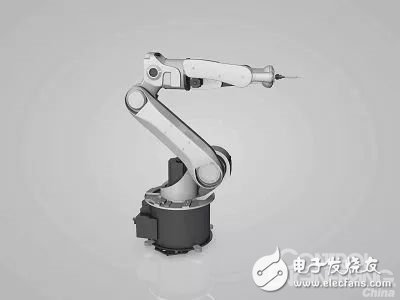
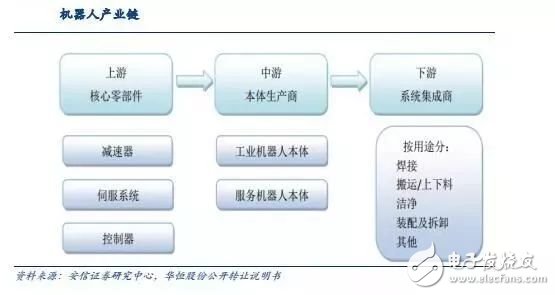
The upstream parts industry of industrial robots is mainly gearboxes, servo motors, inverters, controllers, etc. Among them, reducers, servo motors and servo systems account for a large proportion of industrial robot costs, 39% and 28% respectively. Manufacturing accounted for 22%.
Although the speed reducer and servo system account for a large proportion of the cost of industrial robots, the development of key components such as domestic reducers and servo motors is relatively lagging, the technical level is low, and the product stability is poor. There are many gaps compared with foreign products. As a result, domestic industrial robot reducers, servo motors and other components mainly rely on imports, domestic industrial robots have higher production costs and weaker competitiveness.
Core components upstream of the industrial chain 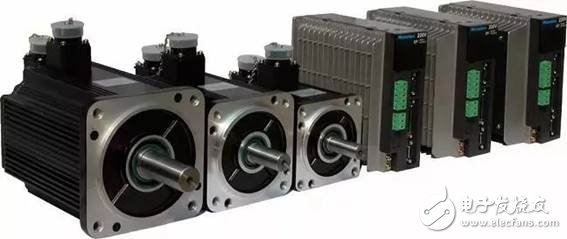
2) The starting torque inertia ratio is large. When the load is driven, the starting torque of the servo motor of the robot is required to be large, and the moment of inertia is small;
3) The continuity and linearity of the control characteristics. With the change of the control signal, the speed of the motor can continuously change. Sometimes the speed is proportional to the control signal or proportional to the control signal. The speed range is wide and can be used for 1:1000. ~1:10000 speed range.
4) small size, small mass, short axial dimension to match the body shape of the robot;
5) It can withstand the harsh operating conditions, can perform very frequent forward and reverse acceleration and deceleration, and can withstand several times overload in a short time. AC servo drives are widely used in industrial robots because of their advantages of high torque moment of inertia ratio, no brush and commutating sparks.
2) High precision of the encoder. In particular, multi-turn absolute encoders used in industrial robots are heavily dependent on imports, which is one of the important bottlenecks restricting the development of high-end servo systems in China. The miniaturization of the encoder is also the core technology for the miniaturization of servo motors. Throughout the changes of Japanese servo motor products, it is accompanied by the coordinated development of motor magnetic circuit and encoder.
In addition, the basic research of domestic servo systems is lacking, including absolute encoder technology, industrial manufacturing technology of high-end motors, breakthroughs in production processes, practical verification of performance indicators, and development of assessment standards. These need to be improved by the core component companies in the domestic robot industry. 
